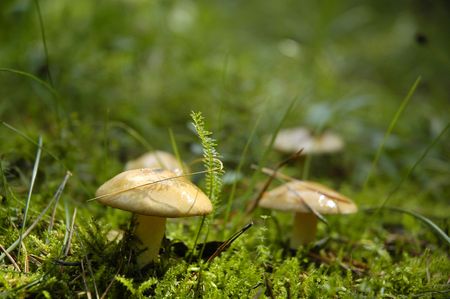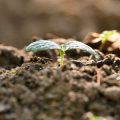1. Understanding the Impact of Slugs and Snails in British Gardens
Slugs and snails are a familiar sight in gardens across the UK, thriving particularly well due to the country’s mild temperatures and frequent rainfall. The damp British climate creates ideal conditions for these gastropods, allowing them to remain active for much of the year, especially during spring and autumn when moisture levels are high. This abundance often leads to significant challenges for gardeners, as both slugs and snails have a voracious appetite for a wide range of native plants, including young seedlings, leafy vegetables, and ornamental flowers. Their feeding habits can quickly decimate carefully tended borders and vegetable patches, leaving behind ragged leaves and damaged crops. Beyond their immediate impact on plant health, unchecked slug and snail populations can disrupt local ecosystems by outcompeting other species and altering the natural balance in garden habitats. For these reasons, effective management is essential for British gardeners who wish to protect their green spaces while maintaining biodiversity. Recognising the extent of the problem is the first step towards adopting strategies that are both effective and environmentally responsible.
Identifying Slugs and Snails: Common Species in the UK
If you’re aiming to tackle slugs and snails in a British garden, it’s essential to first know your enemy. The UK is home to several species of both slugs and snails, some of which are more damaging to gardens than others. Recognising the specific culprits allows for targeted and effective control, especially when considering eco-friendly options. Below is a practical guide to help you identify the most prevalent types you might encounter, along with their key characteristics and typical habitats.
Common Slug Species
| Species | Appearance | Key Traits | Habitat |
|---|---|---|---|
| Grey Field Slug (Deroceras reticulatum) |
Small (up to 4cm), pale grey or brown, often mottled | Very common, highly destructive to seedlings | Lawn edges, vegetable patches, under stones |
| Large Black Slug (Arion ater) |
Large (up to 15cm), black or dark brown, sometimes orange hues | Slow-moving, less damaging than smaller species | Damp grassland, compost heaps, borders |
| Leopard Slug (Limax maximus) |
Large (up to 16cm), pale with distinctive dark spots and stripes | Omnivorous—can eat dead material as well as plants | Sheds, greenhouses, decaying wood |
Common Snail Species
| Species | Appearance | Key Traits | Habitat |
|---|---|---|---|
| Garden Snail (Cornu aspersum) |
Medium (shell up to 4cm), yellow-brown shell with darker spiral bands | Main plant pest among UK snails; hibernates in winter | Flower beds, walls, dense foliage |
| Banded Snail (Cepaea nemoralis) |
Small (shell up to 2.5cm), yellow or pinkish with distinct brown bands | Tends to feed on decaying matter more than live plants | Lawn margins, hedgerows, shaded areas |
Tips for Identification in the Garden
- Look for slime trails on paths and leaves—these are telltale signs of recent slug or snail activity.
- Younger slugs and snails are harder to spot but can do significant damage overnight.
- Check under pots, stones, and dense groundcover during damp or early morning conditions—these are favoured hiding places.
The Importance of Accurate Identification
Certain species play beneficial roles in breaking down organic matter. Accurately identifying which slugs or snails you have helps you focus your control methods on the true pests without harming helpful wildlife. This approach forms the backbone of a responsible and sustainable garden management plan suitable for British conditions.

3. Preventative Strategies: Creating Less Attractive Environments
Preventing slugs and snails from becoming a problem in the first place is often more effective than dealing with them after they have arrived. By making your garden less appealing to these pests, you can significantly reduce their numbers without resorting to harsh chemicals. Here are some practical strategies tailored for British gardens:
Mulching Wisely
While mulching is great for conserving moisture and improving soil health, not all mulch types are equal when it comes to deterring slugs and snails. Opt for coarse materials such as bark chippings, crushed eggshells, or horticultural grit. These create rough surfaces that are uncomfortable for slugs and snails to cross, particularly effective in the damp UK climate where softer mulches can provide a haven for pests.
Physical Barriers
Barriers are an excellent eco-friendly solution. Copper tape, available from most British garden centres, gives slugs and snails a harmless electric shock when they attempt to cross it—perfect for protecting pots and raised beds. You can also use upturned plastic bottles, cloches, or even wool pellets around vulnerable plants. Just remember to check and maintain these barriers regularly, especially after heavy rain.
Garden Design Adaptations
Designing your garden layout with slug and snail control in mind makes a significant difference. Consider raising beds to improve drainage, as slugs and snails thrive in moist environments common in the UK. Space plants further apart to increase air circulation and reduce dampness at soil level. Avoid dense ground cover near susceptible crops, as this creates ideal hiding spots for pests.
Encouraging Natural Predators
British gardens are home to many helpful creatures such as hedgehogs, frogs, birds, and ground beetles—all of which feed on slugs and snails. Create wildlife-friendly habitats by including log piles, ponds, or wildflower areas. These features will attract natural predators and help keep pest populations in check while supporting local biodiversity.
Consistent Maintenance Matters
Regularly removing debris, fallen leaves, and weeds eliminates hiding places for slugs and snails. In the UK’s often wet conditions, this step is especially important during spring and autumn when pests are most active. By integrating these preventative measures into your routine gardening practices, you’ll create an environment that’s less inviting for slugs and snails—helping you maintain a healthy and beautiful British garden without relying on chemical controls.
4. Natural and Wildlife-Friendly Control Methods
When it comes to managing slugs and snails in British gardens, many gardeners prefer to use natural, wildlife-friendly approaches that safeguard the local ecosystem. These eco-friendly techniques are not only effective but also align with a growing desire to promote biodiversity and reduce chemical use. Below, we explore several popular methods among British gardeners.
Encouraging Natural Predators
One of the most sustainable ways to keep slug and snail populations in check is by attracting their natural predators. Birds, hedgehogs, frogs, and ground beetles all play a valuable role in the garden’s balance. Gardeners can encourage these helpful visitors by providing suitable habitats such as log piles, ponds, or dense shrubs. Avoiding the use of pesticides is also essential, as these can harm beneficial wildlife.
Common Natural Predators in UK Gardens
| Predator | How to Encourage Them |
|---|---|
| Hedgehogs | Leave gaps in fences, provide log piles for shelter |
| Frogs & Toads | Create a small pond or damp area |
| Ground Beetles | Allow leaf litter and stones to remain undisturbed |
| Song Thrushes & Blackbirds | Plant native shrubs and trees for cover and nesting |
Hand-Picking: A Traditional Approach
Hand-picking remains one of the simplest and most immediate solutions for reducing slug and snail numbers. Many British gardeners make it part of their evening or early morning routine, when these pests are most active. Using gloves or a small trowel, collected slugs and snails can be relocated far from cultivated areas or disposed of responsibly.
Organic Barriers and Deterrents
Various organic barriers are commonly used throughout the UK to deter slugs and snails without causing them harm. These include crushed eggshells, horticultural grit, wool pellets, or copper tape placed around vulnerable plants. Such materials create an uncomfortable surface that discourages molluscs from crossing.
Popular Organic Barriers in British Gardens
| Barrier Material | Main Advantage |
|---|---|
| Crushed Eggshells | Cuts soft bodies; easy to source from kitchen waste |
| Copper Tape | Creates a mild electrical charge that deters slugs/snails |
| Wool Pellets | Absorbs moisture, forms a rough texture barrier |
Taken together, these wildlife-friendly methods offer practical alternatives to chemical treatments while fostering a healthier garden environment—something highly valued within the British gardening community.
5. Home Remedies and Traditional British Approaches
British gardeners have long been inventive when it comes to keeping slugs and snails at bay, drawing on both age-old wisdom and a bit of kitchen cupboard alchemy. Let’s take a closer look at some tried-and-tested home remedies and how they fit into the eco-friendly toolkit for modern gardens.
Beer Traps: The Classic Allotment Solution
Arguably the most iconic home remedy, beer traps are a staple in many British gardens. Simply sink a shallow dish or container into the soil, fill it with cheap lager or stout, and leave it overnight. Slugs and snails are irresistibly drawn to the yeasty aroma, fall in, and are unable to escape. While effective, this method needs regular maintenance to remain hygienic and effective.
Copper Tape: A Scientific Twist on Tradition
Copper tape is a relatively modern addition to the traditional gardener’s arsenal but has quickly become popular across the UK. Applied around pots, raised beds, or greenhouse legs, copper creates a mild electric charge that deters slugs and snails without harming them. It’s low-maintenance, reusable, and particularly useful for protecting precious seedlings or potted plants.
Eggshells, Grits, and Coffee Grounds
For generations, gardeners have scattered crushed eggshells or horticultural grit around vulnerable plants. These rough barriers make crawling uncomfortable for soft-bodied pests like slugs and snails. More recently, used coffee grounds have joined this list; not only do they create a physical deterrent, but their caffeine content can also be off-putting to molluscs—plus they help recycle kitchen waste into garden nourishment.
Waste Recycling: Making Every Crumb Count
Embracing the British ethos of “waste not, want not,” many gardeners use leftover materials from the kitchen or compost heap as natural barriers. Orange peel halves can act as mini-traps (slugs gather underneath them overnight), while bran or oats sprinkled around beds may draw slugs away from plants so they can be collected and removed in the morning.
Balancing Heritage with Innovation
The best results often come from combining these traditional approaches with new insights. By rotating methods—beer traps one week, copper tape the next—you can prevent slugs and snails from adapting to your defences. Above all, these home-based solutions align perfectly with Britain’s gardening spirit: resourceful, practical, and always mindful of wildlife and the wider environment.
6. When to Consider Commercial Products
While cultural and natural slug and snail control methods are often sufficient for most British gardens, there are times when persistent infestations require a more robust approach. In such cases, commercial products can be considered as part of an integrated pest management strategy. However, their use must be carefully balanced with environmental responsibility and adherence to UK regulations.
Choosing the Right Product
Commercial slug pellets and deterrents are widely available at garden centres and DIY stores across the UK. The most common types include iron phosphate-based pellets (often labelled as “wildlife-friendly”) and ferric phosphate options, which are generally preferred over older metaldehyde-based products due to their reduced risk to pets, wildlife, and waterways. As of 2022, metaldehyde pellets have been banned for outdoor use in the UK due to environmental concerns.
When to Use Pellets
Pellet use should be considered only when other preventative measures—such as barriers, traps, or encouraging natural predators—have proven insufficient. Timing is important: apply pellets sparingly at the start of the growing season or after periods of heavy rain when slugs and snails are most active. Always follow the manufacturer’s instructions for application rates and distribution.
Safe Application Practices
Scatter pellets thinly and evenly around vulnerable plants rather than creating piles or lines; this minimises the risk to non-target species like birds and hedgehogs. Avoid applying before forecasted heavy rain, as this can cause runoff into drains or watercourses, potentially harming aquatic life. Store all products securely away from children and pets.
Environmental Considerations
Even with approved products, it’s crucial to minimise environmental impact. Opt for those certified by organisations such as the RHS or bearing eco-labels. Be aware of local council guidance regarding pesticide use in public spaces or near water bodies. Composting affected plant material rather than disposing of it in green waste collections can also help limit the spread of pests while reducing landfill.
Final Advice
Commercial products should not be a first resort but can play a role in a balanced garden management plan. By choosing safer formulations, applying them judiciously, and respecting local regulations, gardeners can effectively manage slug and snail populations while maintaining a healthy environment for people, pets, and wildlife alike.
7. Long-Term Solutions and Encouraging Biodiversity
Building a resilient, slug- and snail-resistant garden in the UK isn’t just about immediate remedies—it’s about fostering a balanced ecosystem that naturally keeps pest populations in check. By encouraging biodiversity, you’ll create a self-regulating environment where natural predators and healthy plant communities reduce the need for constant intervention.
Strategies for Sustaining a Balanced Ecosystem
Begin by choosing a diverse range of native plants. British wildflowers, hardy perennials, and mixed hedgerows provide habitat and food for birds, ground beetles, frogs, hedgehogs, and other allies that feast on slugs and snails. Avoid monocultures; diversity is key to resilience. Incorporate log piles, stone heaps, and wildlife-friendly ponds to offer shelter for these helpful species.
Promoting Biodiversity in the Garden
Minimise the use of chemical pesticides—these can harm beneficial insects and disrupt natural food chains. Instead, opt for organic mulches like bark or leaf mould, which encourage earthworm activity and improve soil health while making it harder for slugs to move around. Planting ‘sacrificial’ crops such as marigolds or hostas away from prized beds can also help divert slugs’ attention.
Reducing Slug and Snail Populations Over Time
Regularly rotate crops and vary planting times to confuse pests and break their breeding cycles. Encourage birds into your garden with feeders and water baths—thrushes and blackbirds are particularly fond of slugs. Compost wisely: ensure heaps are well-covered to prevent them becoming breeding grounds for molluscs. Over time, these practices combine to create a robust ecosystem where natural checks keep slug and snail numbers manageable.
By focusing on long-term solutions rooted in biodiversity, British gardeners can enjoy flourishing plots with minimal reliance on interventions—supporting both their own harvests and the broader environment.


